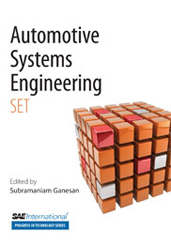Journal Article
Multi-Objective Decision Making under Uncertainty and Incomplete Knowledge of Designer Preferences
2011-04-12
2011-01-1080
Multi-attribute decision making and multi-objective optimization complement each other. Often, while making design decisions involving multiple attributes, a Pareto front is generated using a multi-objective optimizer. The end user then chooses the optimal design from the Pareto front based on his/her preferences. This seemingly simple methodology requires sufficient modification if uncertainty is present. We explore two kinds of uncertainties in this paper: uncertainty in the decision variables which we call inherent design problem (IDP) uncertainty and that in knowledge of the preferences of the decision maker which we refer to as preference assessment (PA) uncertainty. From a purely utility theory perspective a rational decision maker maximizes his or her expected multi attribute utility.

